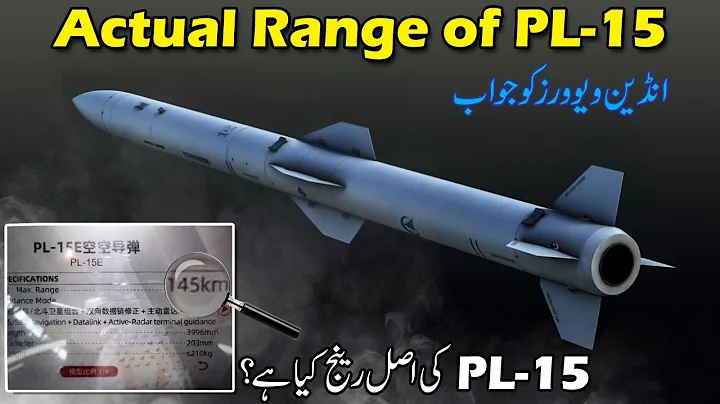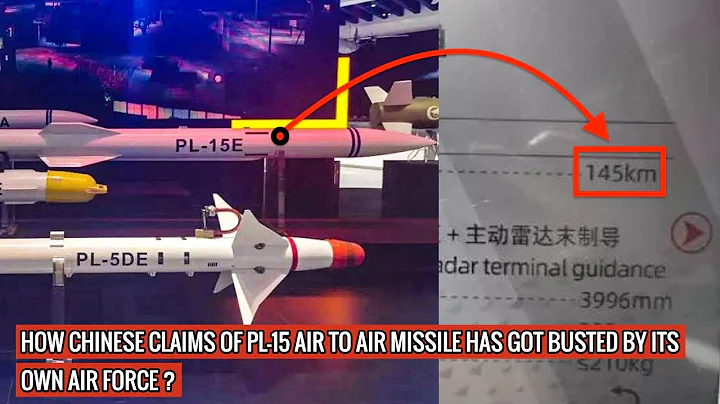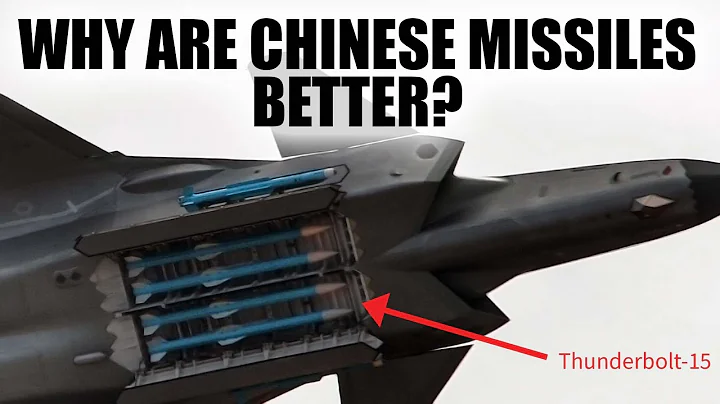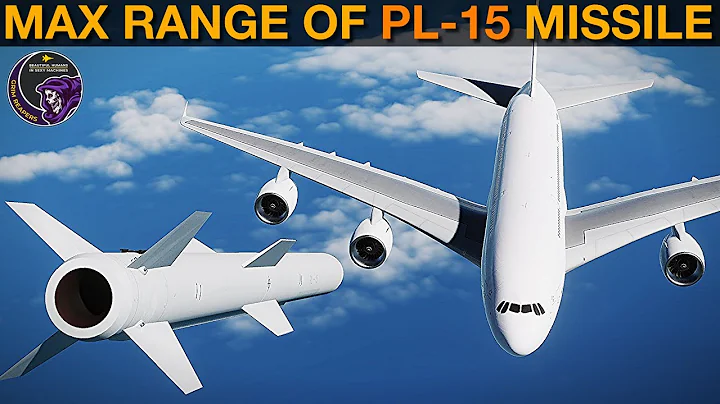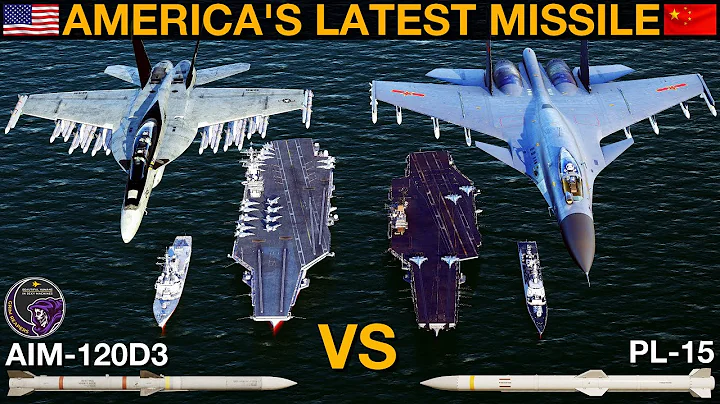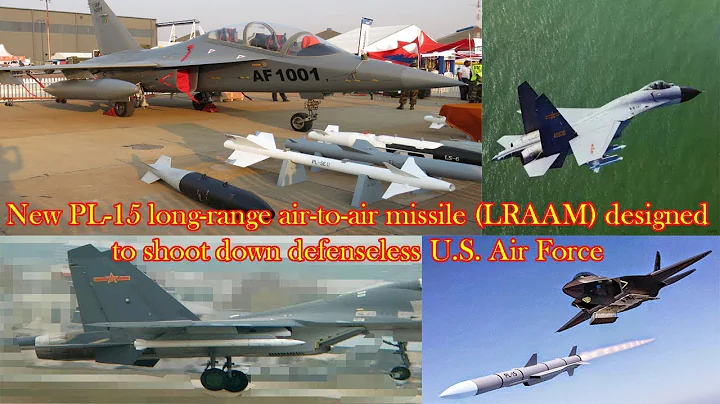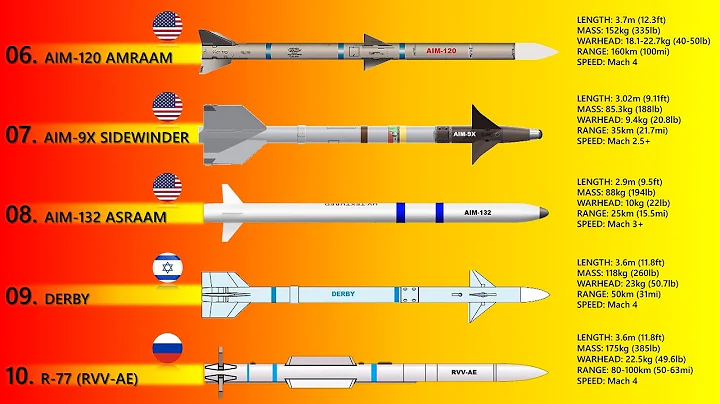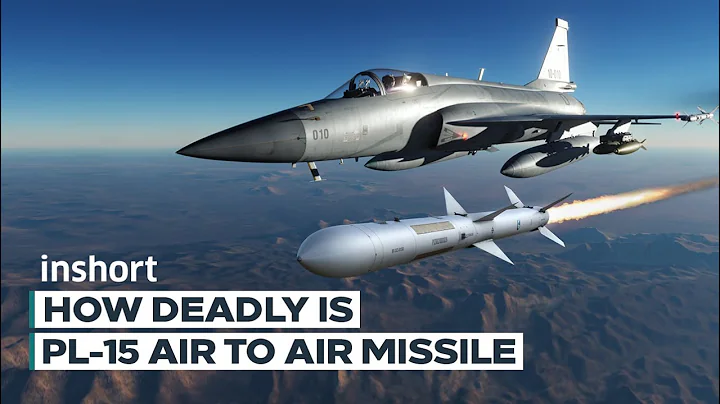The PL-15 missile performance crushes the Taiwan Air Force:

The belly bomb bay of the J-20 fighter jet is opened, and you can see the PL-15 long-range air-to-air missile inside the bomb bay
The PL-15 air-to-air missile is the latest long-range air-to-air missile of our army, Recently A J-16 fighter jet of a certain aviation brigade of the Chinese Air Force intercepted a P-8A anti-submarine patrol aircraft of the Royal Australian Air Force, which attracted widespread attention from foreign media. The main strike weapon of the J-16 fighter jet is the advanced PL-15 air-to-air missile. Today we will take a look at the "unparalleled performance" of the PL-15 air-to-air missile.
1: How is the performance of the PL15 missile?
The performance of the PL-15 air-to-air missile reaches the world's top level
The PL15 air-to-air missile is the flagship product of the China Air-to-Air Missile Research Institute . The PL-15 missile is the latest fourth-generation long-range air-to-air missile and is mainly used for Replaces the PL-12 and R-77 medium-range air-to-air missiles currently in service in the Chinese Air Force. The PL15 air-to-air missile is also the most advanced and longest-range long-range air-to-air missile in the world. Why the PL-15 missile is so advanced starts with its three core properties, which are dual-pulse solid rocket motors and active radars. Guidance and relay guidance capabilities.

The J-10C fighter carries 2 PL-15 long-range air-to-air missiles and 2 PL-10 close-range combat missiles
dual-pulse rocket engine
PL-15 uses a unique dual-pulse rocket engine, which is similar to the solid rocket motor and stamping Compared with the engine , the combustion chamber of the missile is divided into several independent segments. Each segment of the has an independent ignition system. The missile's control system can determine the ignition time of each segment, so that it can maximize This technology greatly improves the flight efficiency of the missile. This technology allows the maximum range of the PL-15 missile to be close to 200 kilometers, which is far greater than the maximum range of 100 kilometers of the PL-12 missile used by the J-10A fighter jet. Even compared with the U.S. Air Force's most advanced AIM-120D air-to-air missiles and PL-15 missiles, it is still at an absolute disadvantage. After
adopts the dual-pulse rocket engine, the no-escape zone of PL-15 missile is greatly increased (the engine startup time of air-to-air missile is very short, while during the engine startup period, the maneuverability of the missile is absolutely guaranteed, and the target is basically unable to escape at this time. ). The no-escape zone of the PL-15 is as high as 70-80 kilometers, which is 20 kilometers farther than the most advanced AIM-120D dual-pulse missile in the United States.

Our army currently has two medium and long-range air-to-air missiles and two short-range combat missiles. The PL-12 and PL-15 missiles
both use active radar guidance
active radar terminal guidance
active radar is the most efficient advanced medium and long-range air-to-air missile. Guidance means, first need to know what semi-active radar guidance is, and what is active radar guidance. Semi-active radar guidance is an air-to-air missile launch that requires fighter to continuously track the target, while active radar guidance does not require a fighter jet to track the target after the missile is launched. The missile itself can complete this task.
is a very appropriate metaphor. An adult takes a child to look for something in a dark room. If the adult needs to hold a flashlight, the child can then look for something. This is the basic principle of semi-active radar. Our army's PL- 11 medium-range air-to-air missiles use semi-active radar guidance. If a child opens the room door with a flashlight and then looks for something, that is the principle of active radar guidance. Our army’s PL-12 missile uses active radar guidance.
What are the benefits of doing this? The fighter jet does not need to continuously track the target. The carrier will greatly reduce its own radar signal, which is equivalent to freeing the fighter jet from the heavy guidance task and ensuring its own safety. This is the biggest advantage.

PL-15 missile relay guidance adopts the guidance mode of inertial guidance plus data link.
relay guidance is super first-class. The relay guidance of
PL-15 missile adopts the guidance mode of inertial guidance plus data link. The missile and the aircraft can communicate in two directions.The missile can not only receive information from fighter jets, but can also transmit the target data it obtains back to the fighter jets. The early warning aircraft , fighter jets and missiles are seamlessly connected, so that the target location can be tracked at any time, ensuring that the attack efficiency is greatly improved.
It can be said that the three major performances of the PL-15 missile are very excellent, and it is powerful enough to achieve the top level of air-to-air missiles in the world.

Chinese Air Force J-10C, J-16 and J-20 fighter jets can all mount PL-15 long-range air-to-air missiles
2 A good horse comes with a good saddle
The Three Musketeers of the Chinese Air Force can all mount PL-15
At present, the Chinese Air Force’s three and a half generations of Fighters J-10C, J-16 and fourth-generation stealth fighters and J-20 can all carry PL-15 long-range air-to-air missiles. Take our army's most advanced J-20 fighter jet as an example. The J-20's belly bomb bay can carry four PL-15 air-to-air missiles.
At the 12th Zhuhai Air Show, the J-20 fighter jet that performed a public performance flight showed the outside world for the first time four PL-15 air-to-air missiles in the belly bomb bay when passing through the venue at low altitude. exposed its fangs to the outside world. , this move caused foreign media to exclaim that the Chinese Air Force already has the world's most advanced and longest-range air-to-air missiles.
J-16 fighter jets and J-10C fighter jets can also carry this missile. Both of these fighter jets have already served the Chinese Air Force in large numbers. This means that the Chinese Air Force already has hundreds of advanced fighter jets capable of carrying PL-15 long-range air-to-air missiles. .

Air force aviation Two types of J-11B fighter jets equipped by a brigade . The color of the J-11B radome on the right side is obviously different from that on the left side.
The third-generation aircraft of the Chinese Air Force are no longer enough to fight against neighboring countries.
The Chinese Air Force also has a large number of third-generation fighter jets, such as , J-11B, , and J-10A fighters. Most of these fighters entered military service around 2010 and have a long service life. However, our army's third-generation fighter jets no longer have a combat effectiveness advantage compared to the third-and-a-half-generation and fourth-generation fighter jets of neighboring countries.
The J-11B fighter still uses Doppler fire control radar. The avionics system with the mission computer, data bus , and photoelectric detection system as the core can only support domestically produced PL-12 medium-range air-to-air missiles and cannot guide missiles with longer ranges. PL-15 missile, upgrading and transforming the J-11B has become a top priority.
The J-11B fighter has begun to upgrade
Judging from public reports in the media, The J-11B fighter has completed the upgrade. The most obvious change in the improved J-11B fighter is the change in the color of the nose radome. From the black radome It turned into light gray, very similar to the light gray radome of the later batch of J-16 fighter jets. This shows that the J-11B fighter jet is likely to have replaced the avionics system with fire control radar as the core.

The J-11B fighter equipped by a certain brigade of the Naval Aviation
The improved J-11B fighter is likely to have the ability to launch PL-15 missiles
The J-11B fighter is likely to have replaced the fire control radar. Judging from the performance characteristics and the development of domestic radar, It is very likely that it is a certain type of domestically produced phased array radar , , and the J-11B is likely to have the ability to launch PL-15 missiles. At present, the new J-11B fighter jet has been successfully equipped with a brigade in the northern theater (the brigade has performed well in recent years and won many championships in the "Golden Helmet " competition and is known as the "Liaodong Eagle"), a brigade in the central theater of and a brigade of the South China Sea Fleet Aviation Force.
This means that hundreds of J-11Bs equipped by our army can carry PL-15 long-range air-to-air missiles. In the future, we do not rule out similar upgrades to J-10A fighters. The number of advanced fighter jets in our army will also be greatly increased. , facing the proliferation of three-and-a-half-generation fighter jets in neighboring countries, it can more effectively respond.
3 Can the PL-15 missile suppress the AIM-120C7 air-to-air missile equipped with the Taiwan Air Force's main fighter

F-16Vblock20 fighter aircraft
Taiwan Air Force upgrade F-16A
The Chinese Air Force has crushed the Taiwan Air Force in terms of the quantity and quality of advanced fighter jets. The Taiwan authorities are dying for Struggling, trying to upgrade the existing F-16A fighter jets to "extend their lives."The Taiwan Air Force F-16V block20 fighter jet is an upgrade based on the F-16A.
The F-16Vblock20 fighter jet is equipped with a new SABR active phased array radar and can use the AIM-120C7 air-to-air missile developed by the United States. Although this type of missile has an improved seeker antenna and improved missile anti-interference capability, the missile range is only 80-90 kilometers, which is not only far lower than the range of the PL-15 missile, but also already in the PL-15 missile's no-escape zone. Taiwan's F-16V fighter jets equipped with AIM-120C7 missiles are at an absolute disadvantage. The J-10C, J-16 and J-20 fighter jets equipped by our military can all suppress the Taiwan Air Force's F-16Vblock20 fighter jet. They have no chance of winning even against the relatively backward J-11B fighter jet that has been modified with radar.

Who are the main combat targets of the E-2K early warning aircraft
4 PL-15 equipped by the Taiwan Air Force?
PL-15, as the "killer" weapon of our army, can mainly attack the following targets.
First of all, it is the enemy's early warning aircraft. Early warning aircraft are extremely high-value air targets. The Taiwan Air Force has a total of 6 E-2K "Eagle Eye" early warning aircraft in active service. This type of early warning aircraft is usually located about 200-300 kilometers behind enemy fighters. Position, this position is just under the protection of enemy fighter jets.
The J-20 fighter jet can completely rely on its stealth advantage to sneak back behind the enemy fighter jet from the flank and destroy the opponent's early warning aircraft. In this way, the enemy will lose its air command platform and become an invisible "blind man." The range advantage of the PL-15 missile is fully utilized. The 200-kilometer range not only reduces the exposure probability of the J-20, but also shortens the attack distance of the J-20 fighter.

The P-3C anti-submarine patrol aircraft equipped by the Japanese Self-Defense Force poses a great threat to the conventional submarines of the East China Sea Fleet.
The anti-submarine patrol aircraft poses a great threat to us.
The deployment density of anti-submarine patrol aircraft in East Asia ranks first in the world. The Japanese Maritime Self-Defense Force owns There are about 100 P-3C anti-submarine patrol aircraft, and the Taiwan Air Force is also equipped with 12 P-3C. The main mission of these anti-submarine patrol aircraft is to use sonobuoys and magnetic detectors to detect Navy submarines . Various types of anti-submarine patrol aircraft pose a serious threat to Chinese Navy submarines. Take the waters of the East China Sea as an example. The 039B conventional submarines equipped by the East China Sea Fleet face a very severe living environment. The water depth of the East China Sea continental shelf is about 50-150 meters, which is very convenient for anti-submarine patrol aircraft to search for submarines. The 039B submarines are at a disadvantage.
PL-15 missile suppresses anti-submarine patrol aircraft
How can we change this unfavorable situation? Anti-submarine patrol aircraft generally carry out anti-submarine operations with the cooperation of fighter jets. The Chinese Air Force uses the J-20 and J-10C fighter jets to gain absolute air supremacy over the East China Sea. It uses the technical advantages of the PL-15 missile to suppress the F-15J fighter jet and then clears out the anti-submarine patrol aircraft. The J-10C can maintain regular patrols, detect anti-submarine patrol aircraft, and immediately use PL-15 missiles to suppress them. Only in this way can the survival probability of the Navy's conventional submarines be improved.

In the future, more advanced missile weapons will appear in the equipment sequence of the Chinese Air Force
5 Conclusion
China’s air-to-air missiles have become the world’s top
China’s air-to-air missiles started relatively late. We relied on battlefield seizures and surveying and mapping to make a difficult start. Today, we can already Develop and equip top-notch air-to-air missiles that will give potential opponents a chill down their backs and a lump in their throats. In the future, there will be more advanced air-to-air missile equipment for the People's Liberation Army Air Force and Naval Aviation Forces.
The U.S. Air Force is also feeling the pressure.
The U.S. Air Force is also feeling the technological suppression from China's air-to-air missiles. The U.S. Air Force and Lockheed jointly announced the development of a new generation of ultra-long-range air-to-air missiles, the AIM-260 missile. will be equipped with F- 35 fighter , you can see how anxious the US Air Force is, but there is not much time left for them, and they are no longer up to them.
